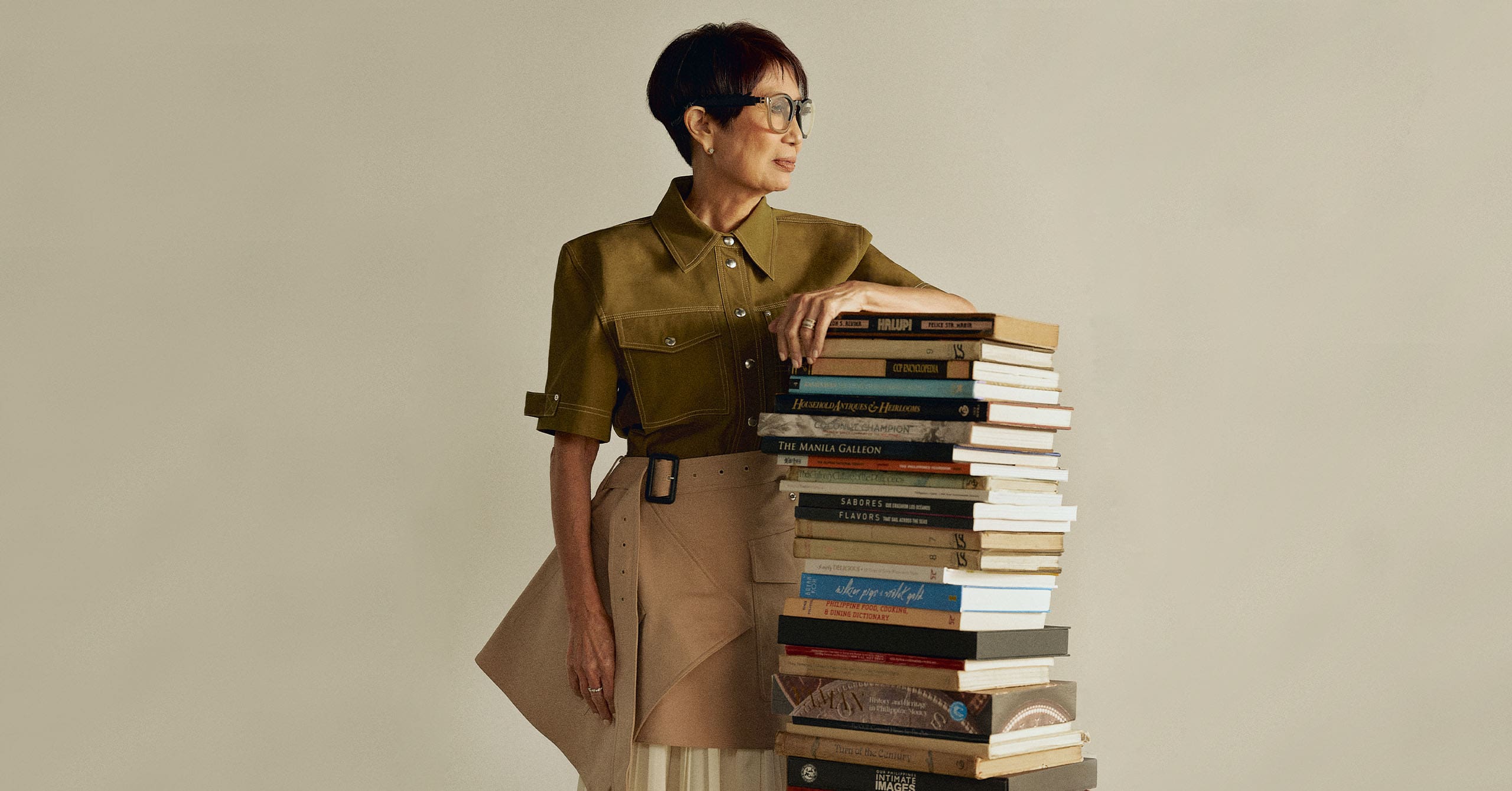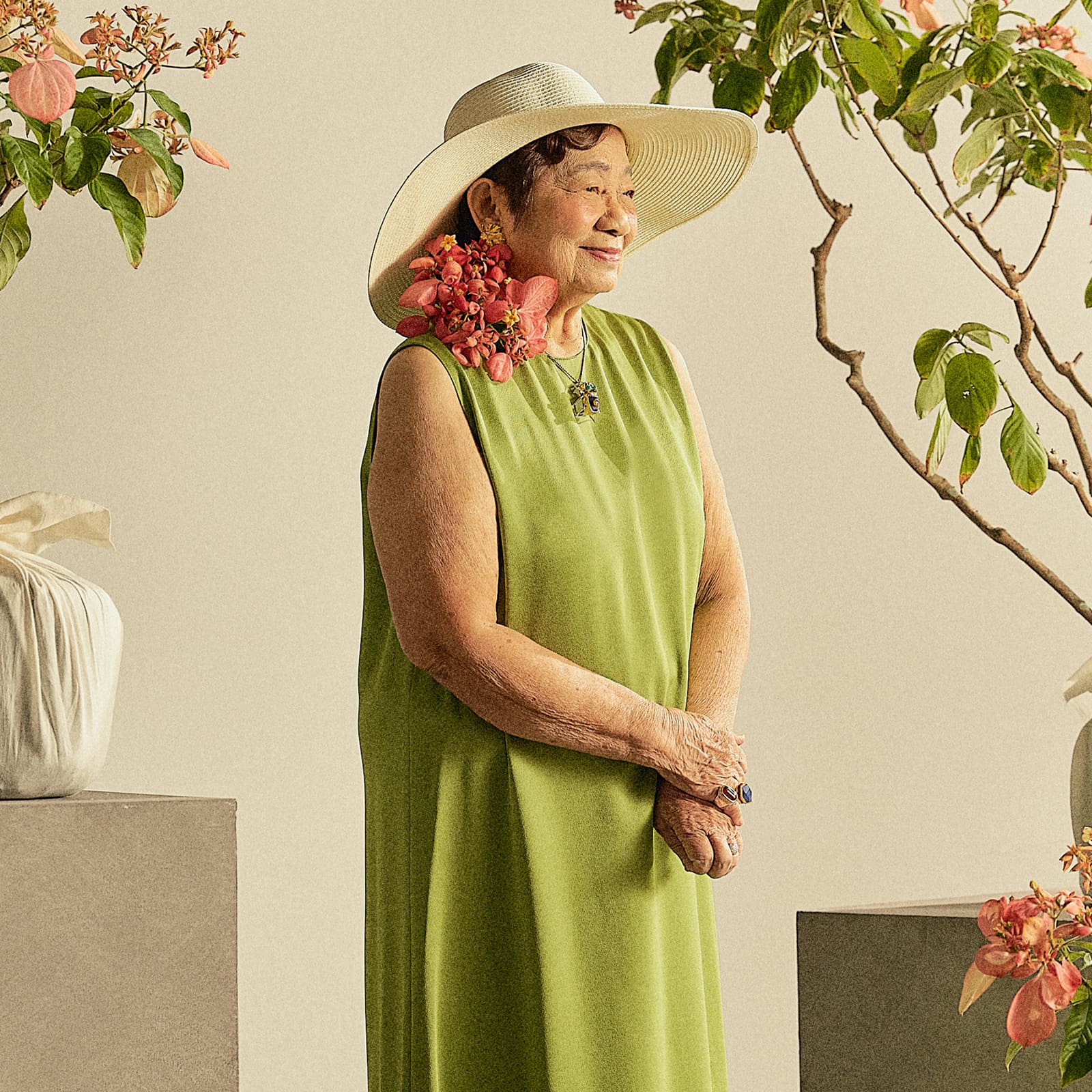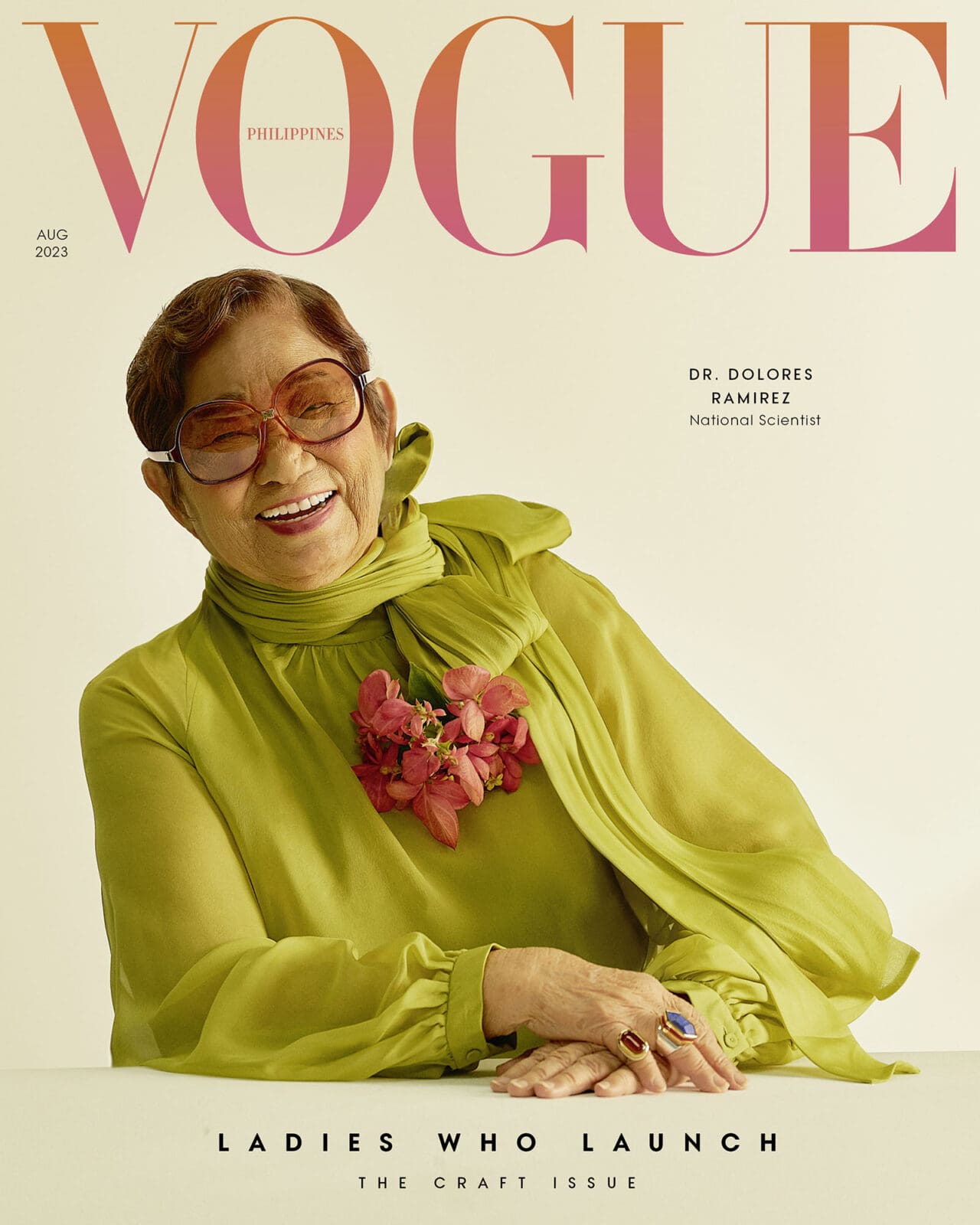Felice wears HELMUT LANG top and overskirt, PHILLIP LIM skirt, NACKYMADE handmade glasses, and J MAKITALO pendant worn as earring. Photographed by Artu Nepomuceno.
Felice wears HELMUT LANG top and overskirt, PHILLIP LIM skirt, NACKYMADE handmade glasses, and J MAKITALO pendant worn as earring. Photographed by Artu Nepomuceno.
After 40 years, the author, heritage advocate, and culinary historian finds there’s more to learn and teach.
Some people quietly toil in the background, contributing to great work across several cultural fields. You don’t always notice they are there. Looking closely across a vast spectrum of books and projects, you’ll see Felice Prudente Sta. Maria’s work among them.
“I used to have a column when writing for Philippine Star in the ‘80s,” she says. “We put some of the columns into a book when I was done. I was convinced to turn the book into A Cultural Worker’s First Manual, and the subtitle is ‘Essays in Appreciating the Everyday.’ It pulled out a lot of columns. I put in a hundred questions that a new cultural worker is likely to ask. I said, ‘Nobody’s going to buy this,’ and sure enough, nobody bought it.”
But, as things turned out, it was just waiting. “Ten, 15 years later, the young new generation who felt they didn’t know enough were suddenly looking for it,” she says. “I started going and giving lectures. Who am I talking to? Is this really going to echo? Am I teaching the successors who are going to matter? I didn’t know a soul from the people who contacted me, and I looked and said, ‘okay, every single region has a super young person attending.’ And from that group—and I’m still in touch with them—many of them have become leaders in their local areas, in the national areas, many of them have become leaders in the arts, in cultural management, museum work, et cetera.”

That is just one example of how her work has evolved over 40 years. Felice Prudenta Sta. Maria is also known for her knowledge of food. She explains that food was a hobby. She began cooking when she was seven and would save money to buy cookbooks. She started asking why Filipino food was only known for trivia when so much was known globally about Chinese and Japanese food. As with all her writing journeys, she started to read, research, and pore over every piece of data she could mine. Over the years, she wrote, co-wrote, and co-edited the following books about food history and heritage: The Governor-General’s Kitchen: Philippine Culinary Vignettes and Period Recipes, What Kids Should Know About Filipino Food; Pigafetta’s Philippine Picnic; The Foods of Jose Rizal; Savor the Word: 10 Years of the Doreen Fernandez Food Writing Award; Slow Food: Philippine Culinary Traditions; Kain Na!: An Illustrated Guide to Philippine Food.
Then there are the other books she has written and all the other essays she has contributed to various books. “There’s a beauty to a history of any subject that people are missing out on, the beauty of the history process because it is developmental. It’s from one period to another, from one element, and then you say, ‘Oh, there are other elements,’ and put them all together. Once you have that sense that life is developmental and that there are dark horses, there are unexpected surprises, somehow, it will help oneself settle better. You can work better, think better, and become a serene person,” she explains. “Because you understand how development works. The satisfaction that it gives is beautiful. It’s beautiful satisfaction to have found data, to be able to synthesize it in a way that others can’t because they haven’t had the breadth of the research.”
Sta. Maria defines herself as “a thinker—quietly, humbly.” She even reads the dictionary in her spare time. “It’s because we don’t know enough. That’s the whole point.”
Meet The Ladies Who Launch
In thoroughly exploring their passions, honing their skills, and continuing to be beacons who inspire a whole nation, these five women show a life well-crafted and well-lived.
According to the World Economic Forum Report Global Gender Gap Report from June 2023, the Philippines, New Zealand, and Australia have the highest gender parity among East Asian and Pacific countries. If young Filipinas today have an edge, no doubt that this was carved out by the many trailblazing women who came before. Heroines in their own right, these revolutionaries are educators, scholars, writers, and artists.
Here, we pay tribute to five pioneering women who have paved the way and showed us how to live a meaningful life. They are our national treasures. Literally, too, as Alice Reyes is a National Artist for Dance and Dolores Ramirez is a National Scientist.
These women traversed challenging waters and anchored themselves on the world stage. They achieved tremendous milestones over 250 years combined, in the fields of Culture, the Arts, and the Sciences, helping shape Philippine society and influencing future leaders for generations to come.
Marian Pastor Roces
Critical thinker, curator, author, and historian.
Glenda Barretto
Chef, restaurateur, and author.
Alice Reyes
Dancer and National Artist.
Dr. Dolores Ramirez
National Scientist.
By Ria De Borja. Photographs by Artu Nepomuceno. Beauty Editor: Joyce Oreña. Fashion Director: Pam Quiñones. Makeup: Gery Peñaso of M.A.C Cosmetics, Ting Duque. Hair: JA Feliciano, Mong Amado. Art Director: Jann Pascua. Production Design: Justine Arcega-Bumanlag. Producer: Bianca Zaragoza, Anz Hizon. Multimedia Artists: Gabbi Constantino, Tinkerbell Poblete. Production Assistant: Zofia Agama. Photographer’s Assistants: Choi Narciso, Jordon Estrada. Stylist’s Assistant: Ticia Almazan. Production Design Assistants: Gabrielle Mantala, Geber Cunanan, Jan Abal, Olderico Bondoc. Makeup Assistants: Charisma Contaoi, Leilani Samson, Lorrine Villamayor. Interns: Jean-Jacques Girod- Roux, Sophia Lanawan.





